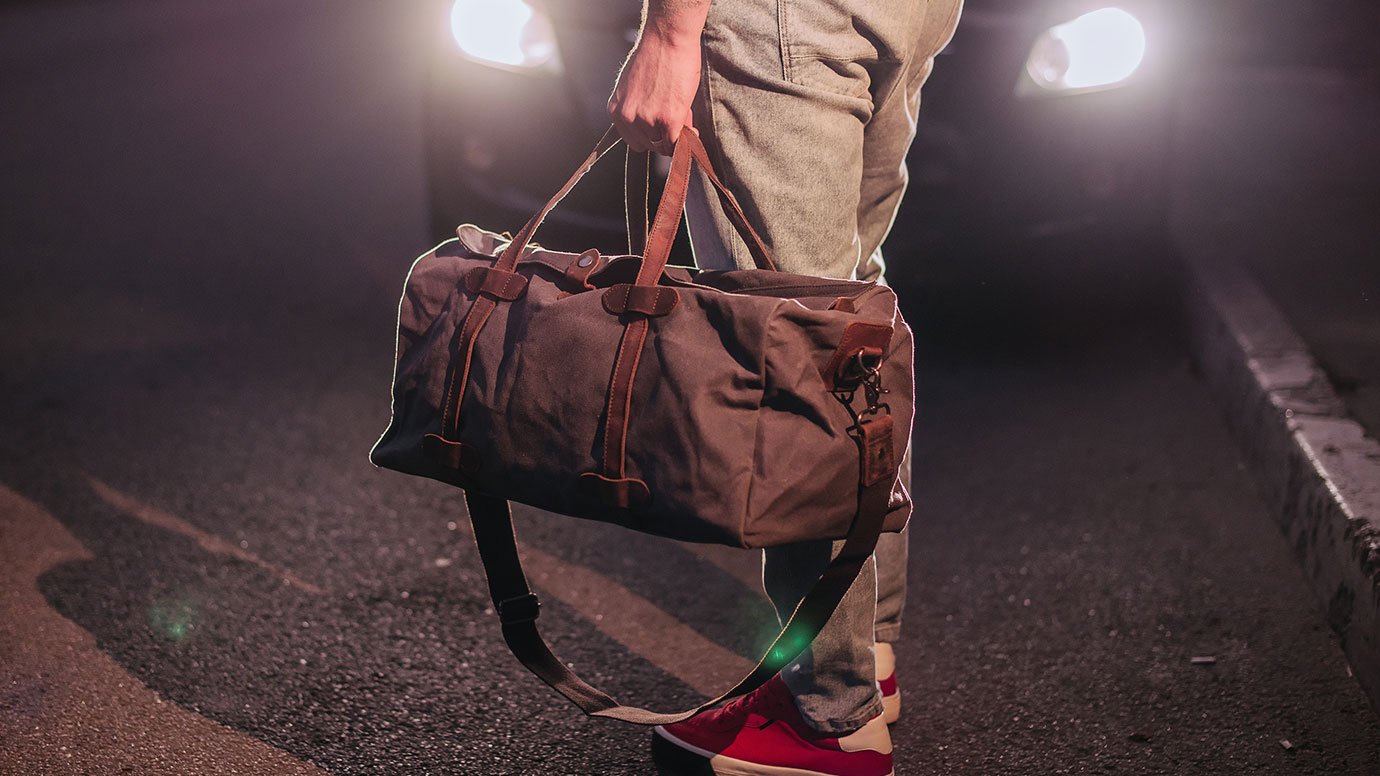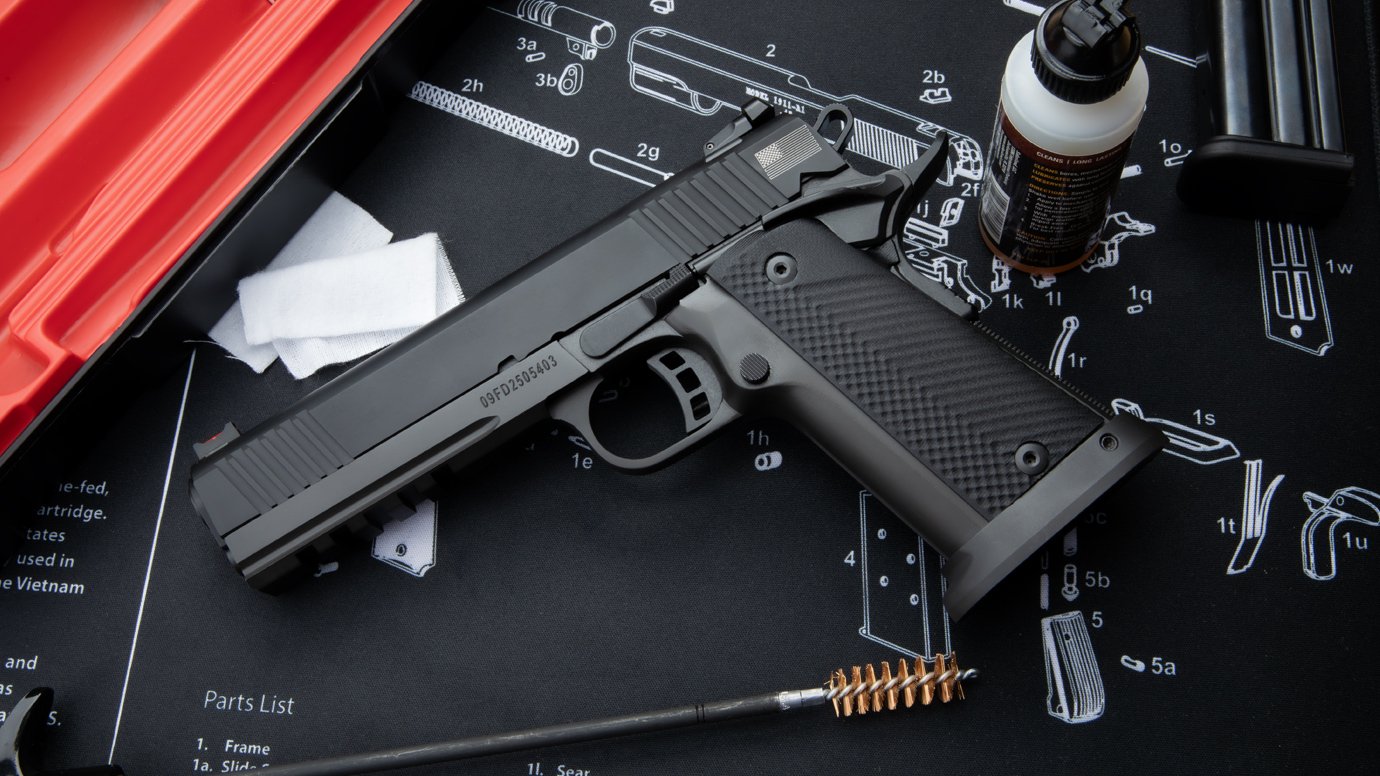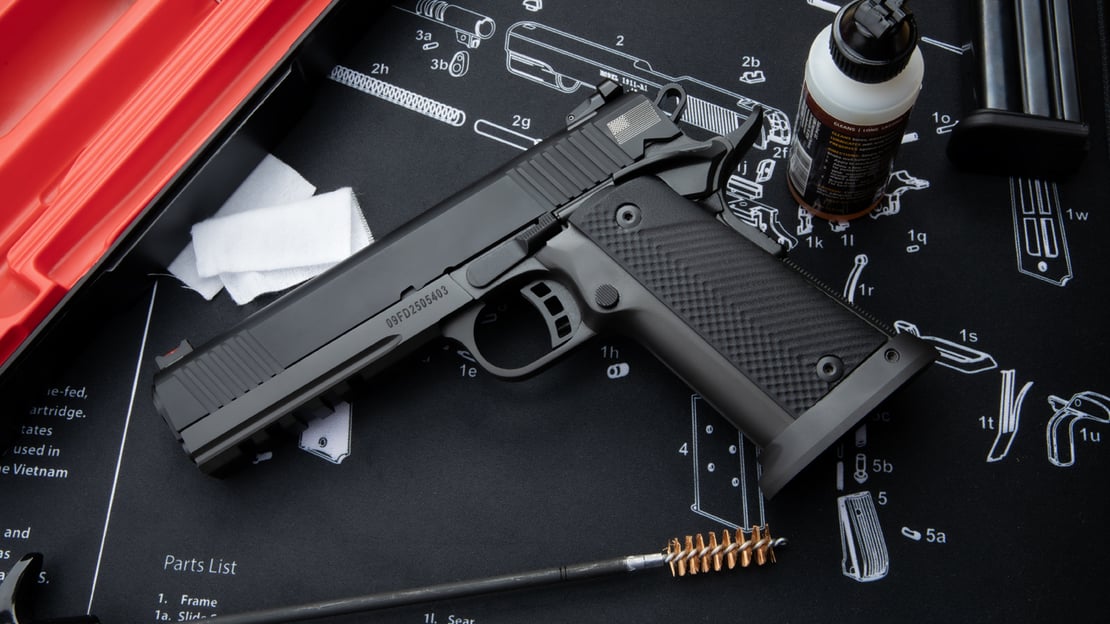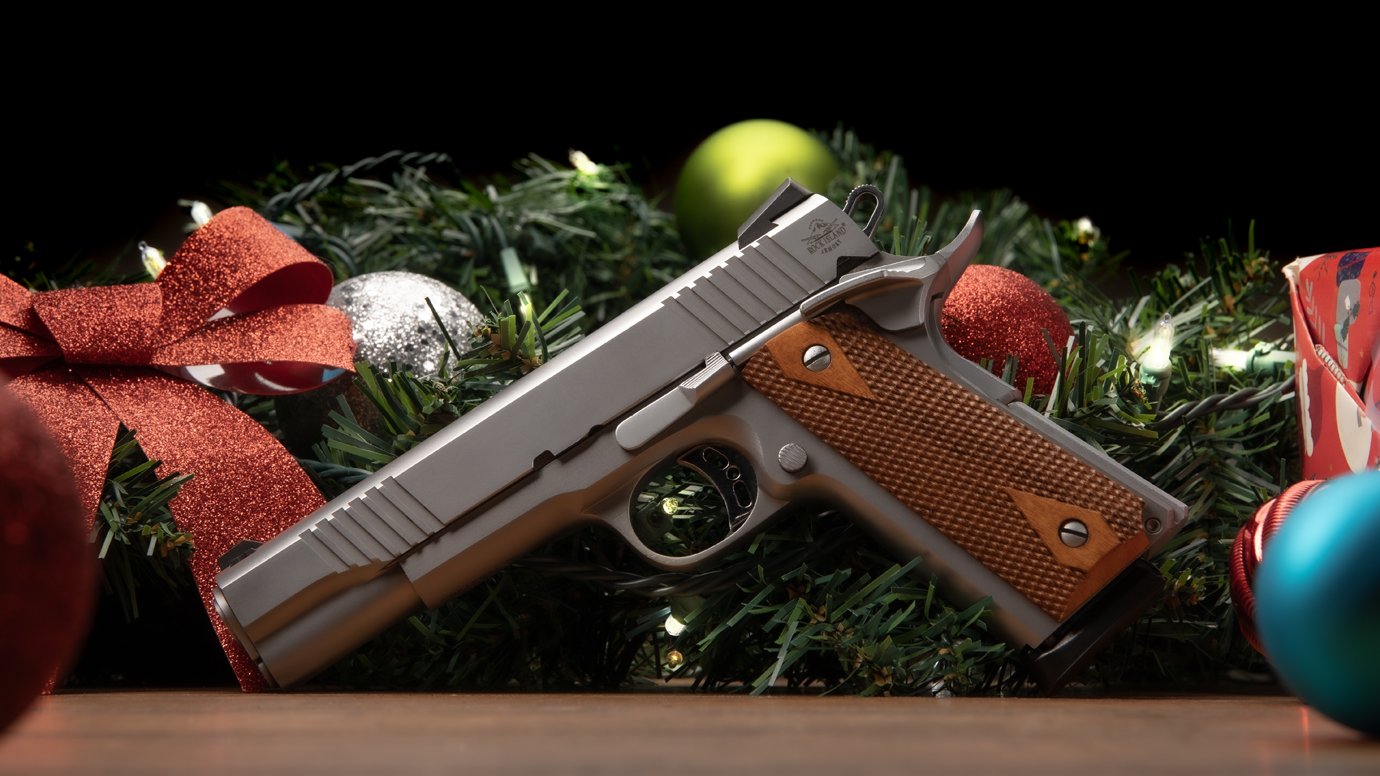How to Properly Maintain Your 1911 Pistol
Posted by Team Armscor on Aug 20, 2024 7 Minute Read
-1.png?width=1111&height=625&name=Untitled%20design%20(2)-1.png)
The 1911 firearm is one of the most popular pistol platforms in the world— and with good reason. The simple, durable design makes using and maintaining it a painless process. Learn how to maintain your 1911 pistol with our detailed guide. Ensure your firearm remains in top condition with these expert tips on 1911 maintenance.
The 1911 pistol earned its place as a prominent, long-time service pistol for militaries and law enforcement around the world, thanks not only to good firepower but also to its intuitive, easy-to-maintain design. A simple field-strip or complete disassembly can be performed relatively quickly (and with minimal tools). And we should emphasize: For most 1911 maintenance, a simple field strip will do—you won’t need to completely disassemble your 1911.
HOW TO MAINTAIN YOUR 1911 Pistol
If something is worth doing, it's worth doing right. That's why it is critically important to approach your 1911 maintenance with a sense of diligence and attention to detail. Without these, you stand to damage your firearm's internals.
FIRST: USE PROPER VENTILATION
There is no more recognizable scent in the world of gun cleaning than Hoppe’s #9. They even make air fresheners that smell like it. However, most solvents and cleaners that have any form of the petrochemical base can cause severe brain damage if used improperly. Even with today’s more earth-friendly, non-toxic cleaning agents, ventilation should be used. Gun shot residue contains unburnt powder, atomized heavy metals, and all sorts of toxic chemicals from the bullet components. Your gun may smell minty-fresh, but don’t take silly chances. It’s also a good idea to wear gloves while you clean your firearm and wash your hands thoroughly afterward to minimize chemical exposure.
UNLOAD IT, EVEN IF YOU THINK IT’S NOT LOADED
Remove the magazine and rack the slide, using the slide stop to hold it open while you verify that the chamber is empty. Always remove the magazine first, as a full magazine will fill an empty chamber. Do not assume that it has been cleared. Remove the magazine, and check the chamber.
(ACTUALLY) READ THE MANUAL
Every new 1911 pistol is shipped with a manual (or at least a CD or note card with a web address to find the manual) and you need to read it. As new technology in materials, design or machining develops, changes can occur. Reading the manual takes as much time as drinking a cup of coffee, it can prevent a lot of easily prevented mistakes, and it will answer many common questions.
BRUSH FROM THE CHAMBER
The business end of the barrel is finished a certain way. There is a crown on the barrel that manages the release of gas pressure behind the bullet as it exits the barrel. Take care not to damage the crown during cleaning. Over time, this can cause your fine, accurate weapon to be inaccurate or even erratic. By brushing from the chamber, you prevent this issue entirely.
USE OIL
Not grease. Not WD-40. Use oil specifically made for firearms (often called CLP—or clean, lube, protect—oil). And while you want to make sure to use enough to get the job done (and the 1911 pistol prefers more lubrication, relatively speaking) you don’t want to overdo it. Grease can solidify and gum up due to temperature changes and foreign matter becoming trapped within. What is slippery to your skin is sticky to dust, sand, dirt and unburnt powder. Penetrating oils like WD-40 are wonderful for their intended purposes, but can penetrate your ammunition and cause misfires or duds.
WIPE IT DOWN
When you have finished cleaning, lubing and re-assembling your 1911 gun, wipe it down with an oily rag or a silicone-impregnated cloth. The chemistry of the human body is not known to be gentle on firearm finishes and can penetrate Parkerizing and ruin bluing. The final wipe will leave a light coating of CLP oil, or a fresh application of silicone, on the surface of the weapon, helping to prevent damage to the finish.
FREQUENCY
Guns are machines. The 1911 was designed to function in a wide variety of terrain and climate. A properly maintained 1911 firearm can be fired with black powder loads if needed. If you’re using yours this way, it should be cleaned often. For most shooters, though, a light cleaning after each trip to the range—along with a more thorough cleaning once or twice a year—should do it.
If you choose to take the time needed to care for your 1911 pistol properly, it is sure to return the favor. If you neglect your firearm, then it may let you down when you need it to perform the most. The simplicity of the 1911 design greatly reduces the amount of effort it takes to maintain, so do yourself a favor and take the time to care for your handgun properly.
WHEN YOU’RE NOT USING IT, STORE Your 1911 Pistol PROPERLY
Humidity sucks. Especially when you’re keeping your Rock Island Armory 1911s stored away for long periods of time. The best thing you can do to keep unfinished parts of your favorite guns rust-free is to keep them stored in a consistently dry environment.
Of course, this can be hard if you’re in a particularly humid environment, like Florida. And, yes, since humidity is in the air, it can find its way into your home and gun safe. A couple of methods for keeping your guns dry are to install a de-humidifier in the room or even within the gun safe itself. Silica packets, like the ones used in bags of beef jerky to keep the meat dry, can be placed throughout a gun safe to fight humidity.
If you’re storing your firearms long-term, make sure to clean and inspect them twice a year—especially if you’re using them for home defense. You don’t want to find yourself in a situation where you need your firearm only to discover it’s full of rust and lint.
If you’re still wondering how it should be done, take a look at this video detailing how to clean your 1911 pistol.






